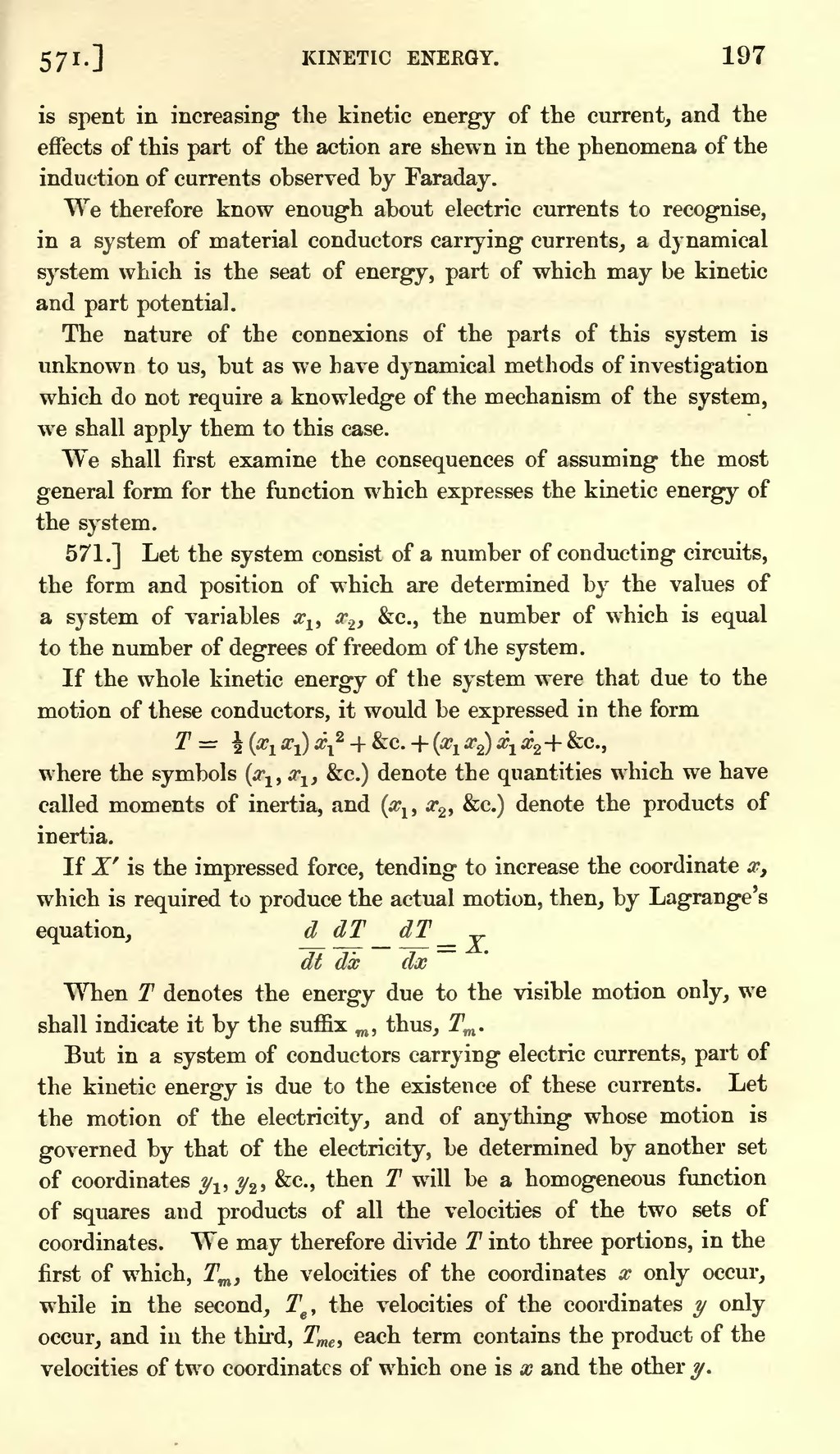is spent in increasing the kinetic energy of the current, and the effects of this part of the action are shewn in the phenomena of the induction of currents observed by Faraday.
We therefore know enough about electric currents to recognise, in a system of material conductors carrying currents, a dynamical system which is the seat of energy, part of which may be kinetic and part potential.
The nature of the connexions of the parts of this system is unknown to us, but as we have dynamical methods of investigation which do not require a knowledge of the mechanism of the system, we shall apply them to this case.
We shall first examine the consequences of assuming the most general form for the function which expresses the kinetic energy of the system.
571.] Let the system consist of a number of conducting circuits, the form and position of which are determined by the values of a system of variables x1, x2, &c., the number of which is equal to the number of degrees of freedom of the system.
If the whole kinetic energy of the system were that due to the motion of these conductors, it would be expressed in the form
where the symbols (x1, x1, &c.) denote the quantities which we have called moments of inertia, and (x1, x2, &c., ) denote the products of inertia.
If X' is the impressed force, tending to increase the coordinate x, which is required to produce the actual motion, then, by Lagrange's equation,
When T denotes the energy due to the visible motion only, we
shall indicate it by the suffix m, thus, Tm.
But in a system of conductors carrying electric currents, part of the kinetic energy is due to the existence of these currents. Let the motion of the electricity, and of anything whose motion is governed by that of the electricity, be determined by another set of coordinates y1, y2, &c., then T will be a homogeneous function of squares and products of all the velocities of the two sets of coordinates. We may therefore divide T into three portions, in the first of which, Tm the velocities of the coordinates x only occur, while in the second, Te , the velocities of the coordinates y only occur, and in the third, Tme, each term contains the product of the velocities of two coordinates of which one is x and the other y.


